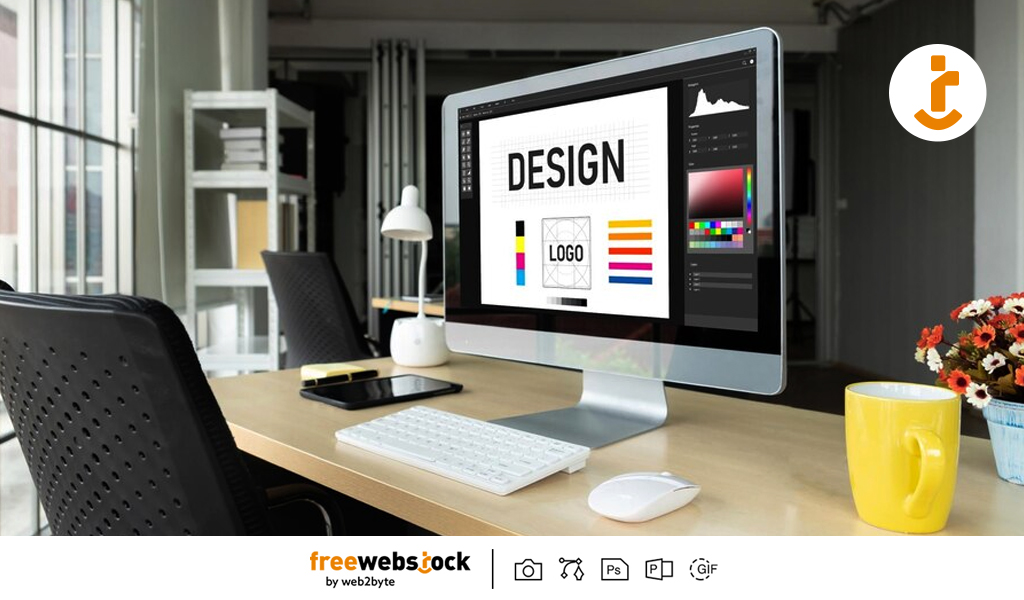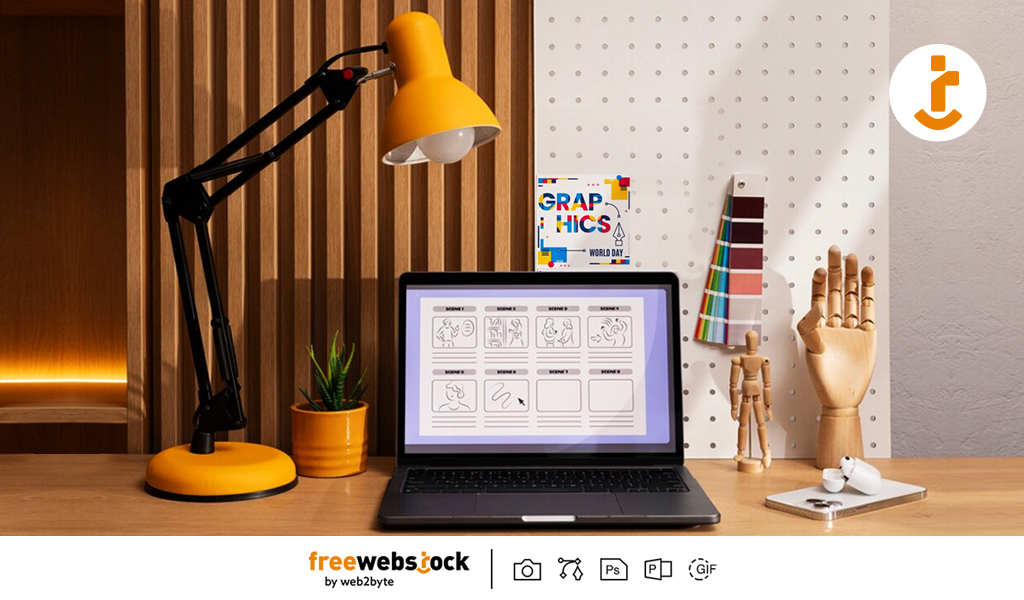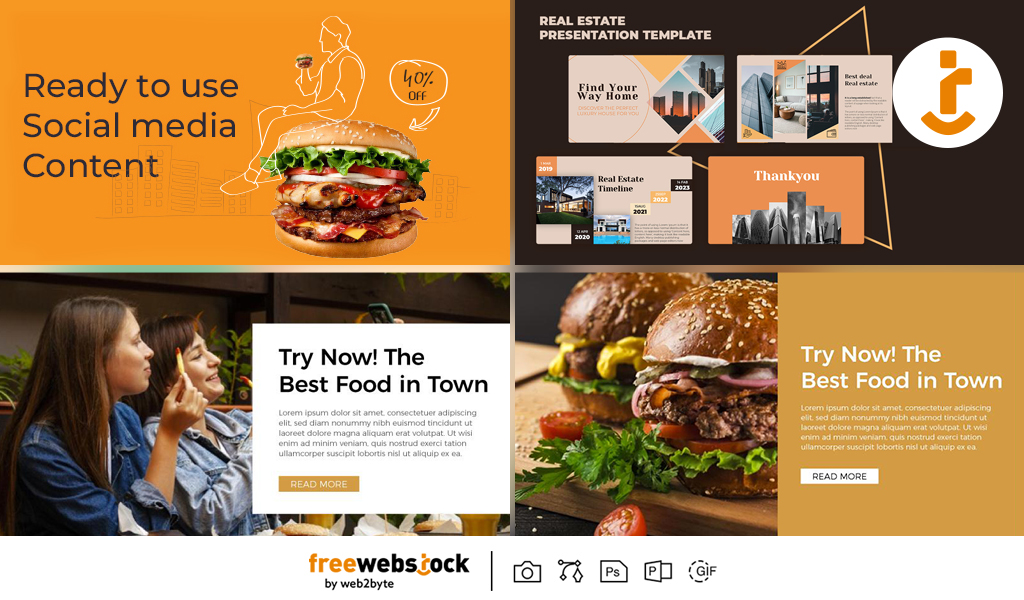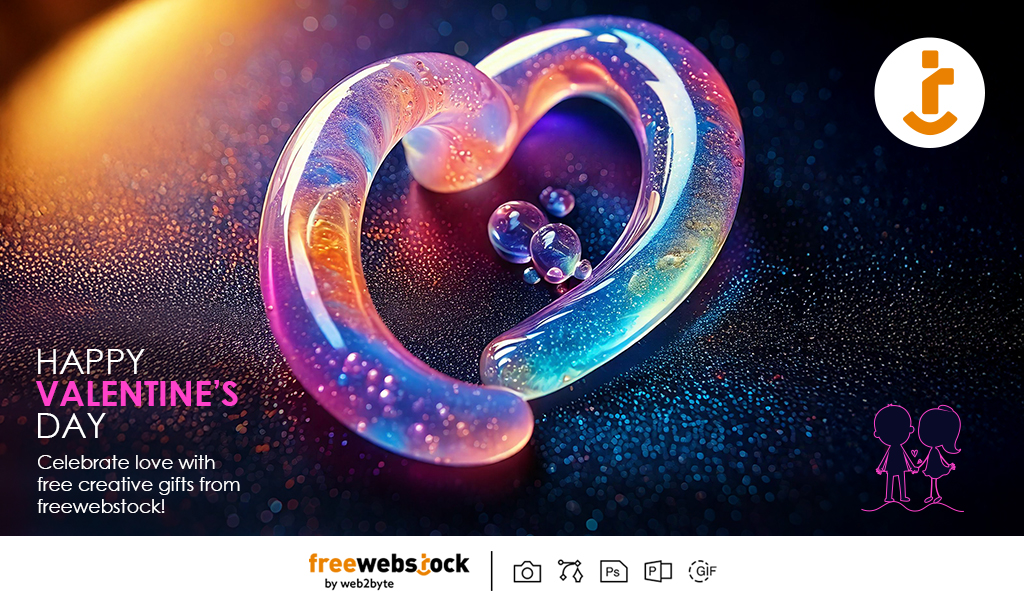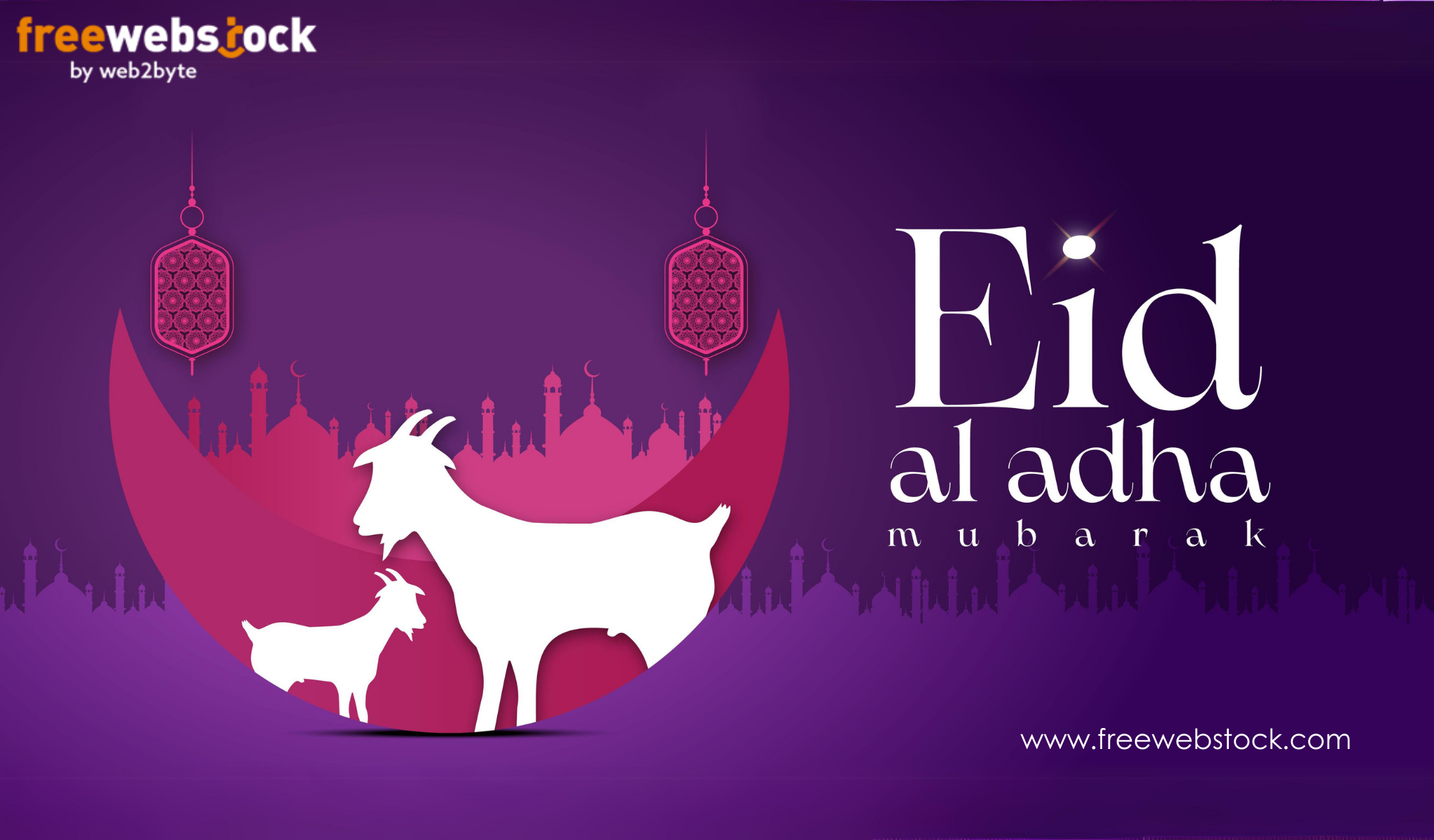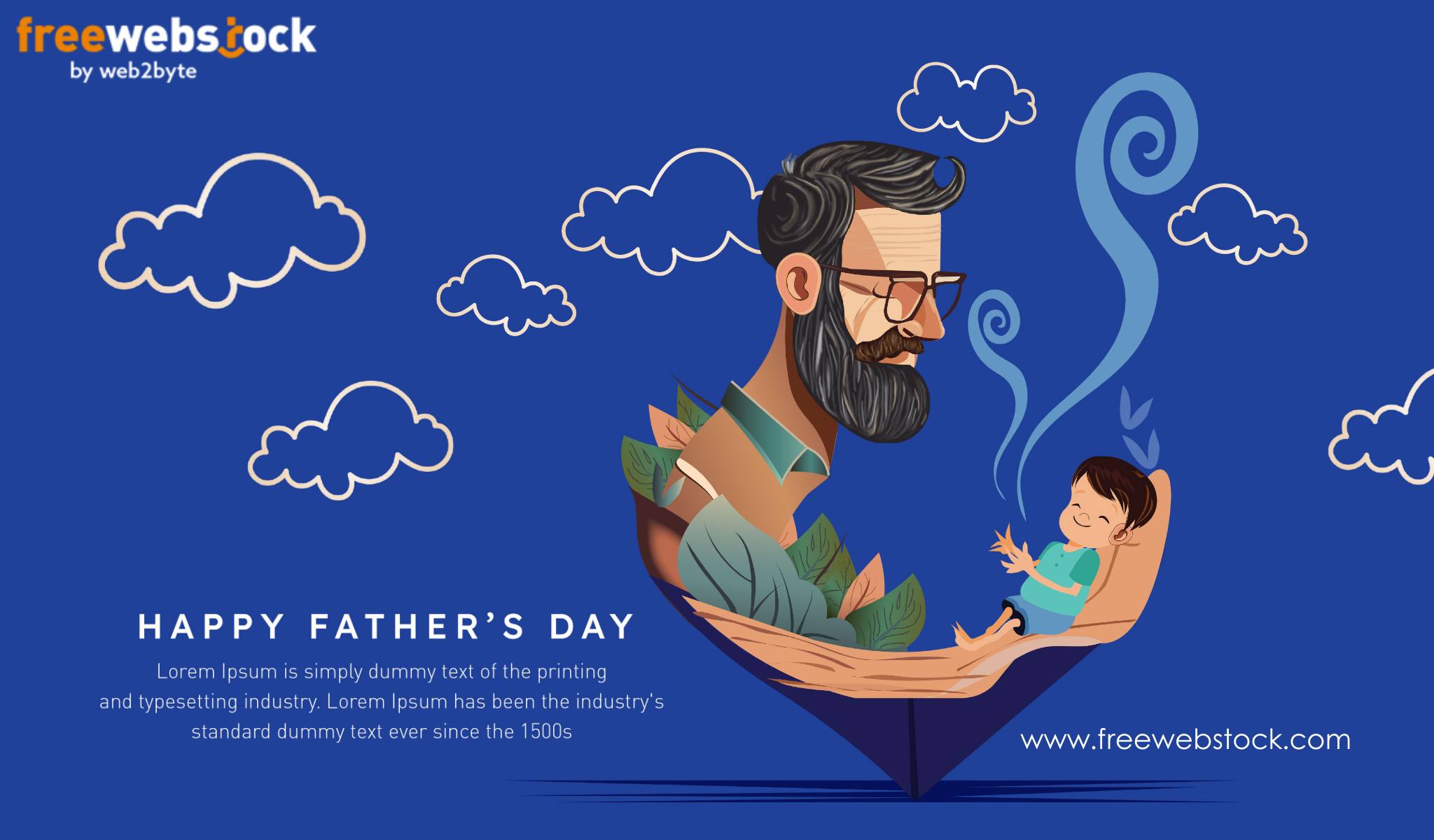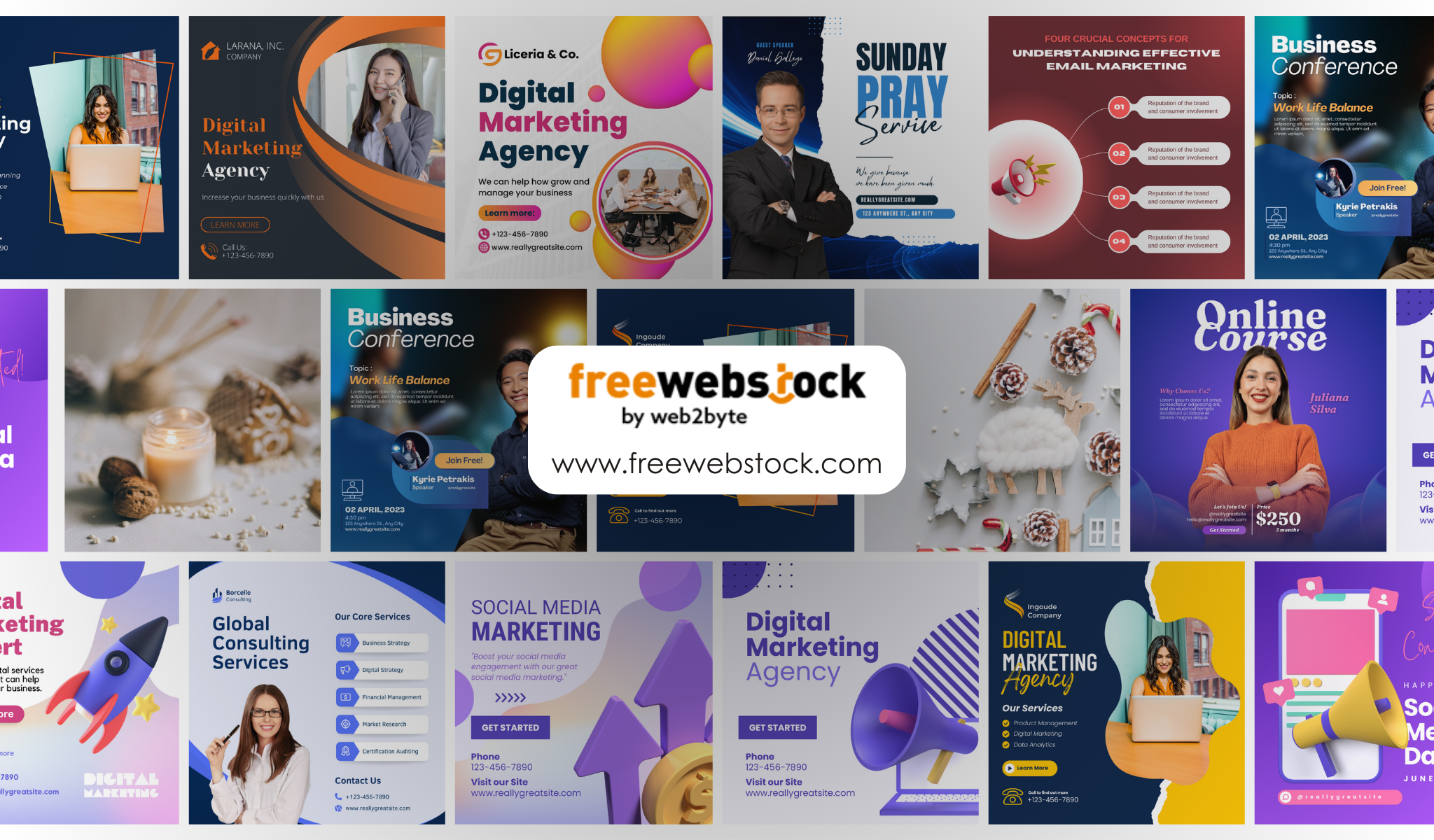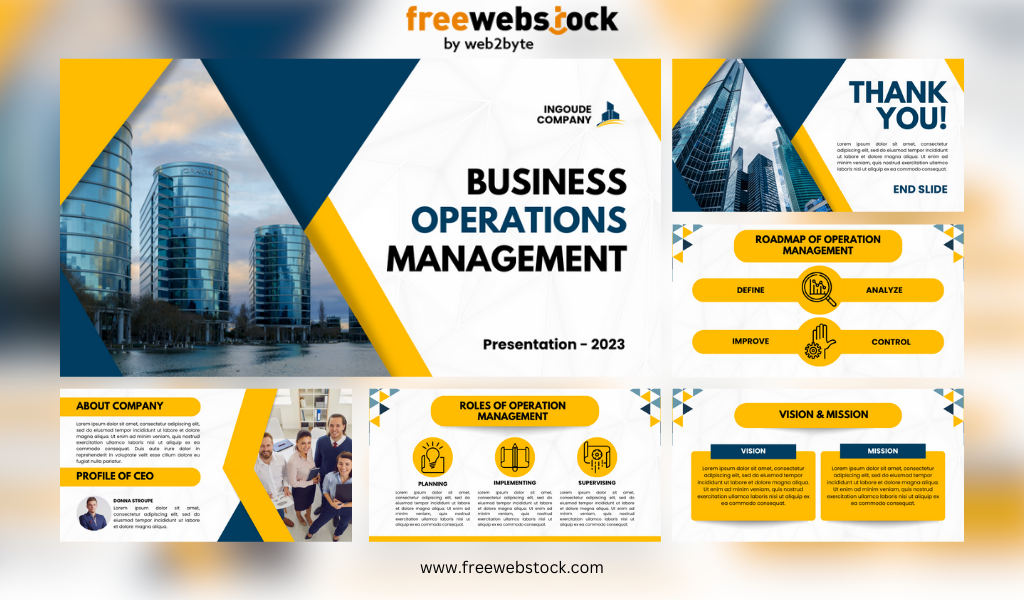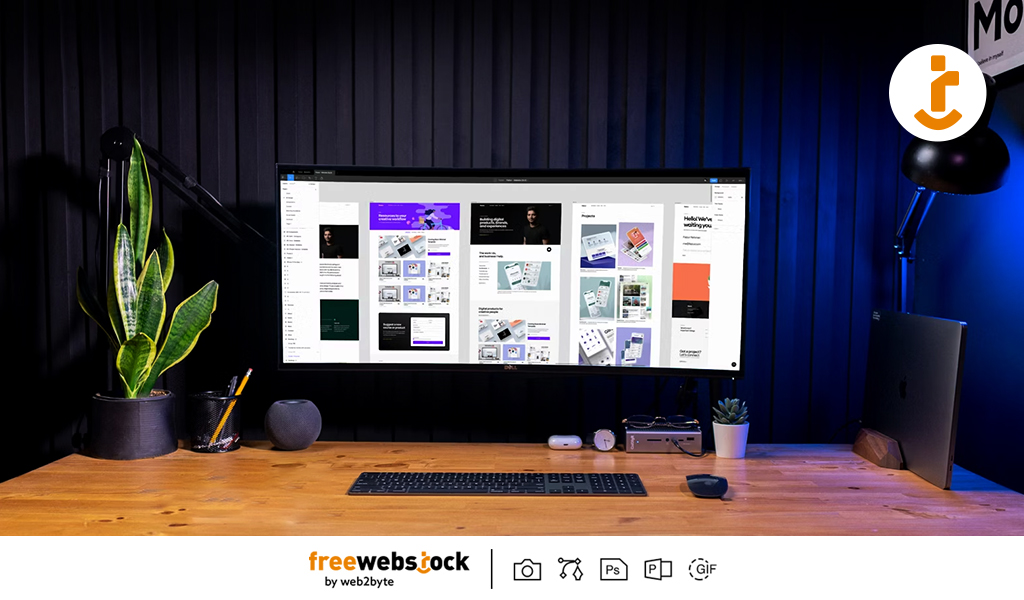
BY FreeWebStock
March 13, 2025In the ever-evolving world of graphic design, staying attuned to emerging trends is key to creating work that resonates with contemporary audiences. As visual preferences shift, designers must balance innovation with functionality to craft compelling narratives. This blog explores seven cutting-edge design styles dominating 2025 and offers actionable strategies to integrate them into your projects—empowering you to elevate your creativity while leveraging high-quality resources available on platforms like FreeWebStock.
1. Retro & Y2K Revival
Nostalgia continues to fuel design, with the Y2K aesthetic (think early 2000s tech culture) making a bold comeback. This trend embraces neon hues, pixel art, glitch effects, and futuristic metallics, blending retro charm with a cyberpunk edge.
How to Adapt:
- Use vibrant, high-contrast color palettes (electric blues, hot pinks, chrome accents).
- Incorporate retro textures like grainy overlays or VHS-style distortions.
- Mix analog elements (hand-drawn doodles) with digital effects for a playful contrast.
2. Minimalist & Modern Simplicity
Minimalism remains a timeless favorite but has evolved to prioritize warmth. Think clean layouts, muted monochromatic schemes, and strategic whitespace paired with subtle gradients or organic shapes for depth.
How to Adapt:
- Focus on functionality: Trim unnecessary elements and emphasize clear typography.
- Use grid systems for balanced compositions and soft transitions (e.g., gradient overlays).
- Introduce tactile textures like embossed paper or linen to avoid sterility.
3. 3D Surrealism & Hyperrealism
Advances in software have propelled 3D design into surreal territory. Designers are crafting hyperrealistic objects, floating landscapes, and impossible physics, merging reality with imagination.
How to Adapt:
- Experiment with tools like Blender or Cinema 4D to create depth-rich visuals.
- Combine 3D elements with 2D backgrounds for contrast.
- Use dramatic lighting and shadows to enhance realism.
4. Bold Typography & Experimental Fonts
Typography is stepping into the spotlight with oversized, custom lettering and animated text. Designers are breaking rules via warped shapes, overlapping layers, and kinetic fonts.
How to Adapt:
- Choose one standout font as a focal point; balance with minimalist visuals.
- Play with asymmetry—tilt text or let it interact with images.
- Add motion to digital designs using scroll-triggered animations.
5. Abstract Geometry & Fluid Shapes
Abstract designs are thriving through asymmetrical layouts, fluid blobs, and gradient meshes. This trend merges mathematical precision with organic unpredictability.
How to Adapt:
- Layer translucent shapes for dynamic depth.
- Pair bold geometries with muted backgrounds to avoid clutter.
- Use gradient mesh tools in Illustrator for smooth color transitions. Resources to Explore: Geometric pattern kits, fluid vector shapes, and gradient presets.
6. Eco-Conscious & Organic Textures
Sustainability is influencing aesthetics, with designs embracing raw, earthy textures, recycled paper effects, and nature-inspired motifs like leaves or watercolor washes.
How to Adapt:
- Opt for warm, natural palettes (terracotta, sage, ochre).
- Integrate hand-drawn illustrations or imperfect brushstrokes.
- Use “low-waste” layouts that mimic recycled material textures. Resources to Explore: Organic texture packs, eco-themed templates, and botanical vectors.
7. Dark Mode Aesthetics
With the rise of dark-themed UIs, designers are embracing moody palettes. Deep backgrounds paired with neon accents or muted pastels create sophistication and reduce eye strain.
How to Adapt:
- Ensure text remains legible with sufficient contrast.
- Use accent colors sparingly to highlight key elements.
- Add subtle gradients or glassmorphism effects for depth.
Final Thoughts
Adapting design trends isn’t about chasing every fad—it’s about selectively integrating elements that align with your project’s message. Whether you’re experimenting with retro glitches or eco-friendly textures, the key lies in balancing innovation with purpose. To bring these styles to life, explore diverse libraries offering premium assets, from 3D models to typography kits, ensuring your work remains fresh and impactful.
Design
The Dynamic World of Graphic Art and Design: Trends, Tools, and Future Directions
BY FreeWebStock
March 11, 2025Design
Free Design Resources to Craft Stunning Valentine’s Day Content
BY FreeWebStock
February 14, 2025Design
Dive into Creativity: Free GIF Downloads for Copyright-Free Animation
BY FreeWebStock
April 23, 2024